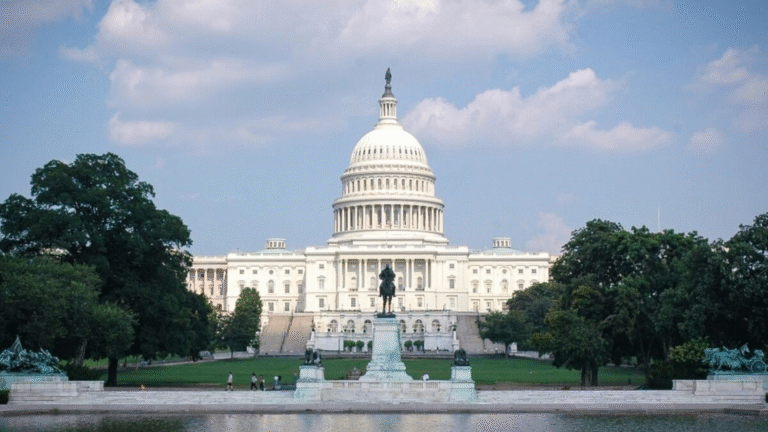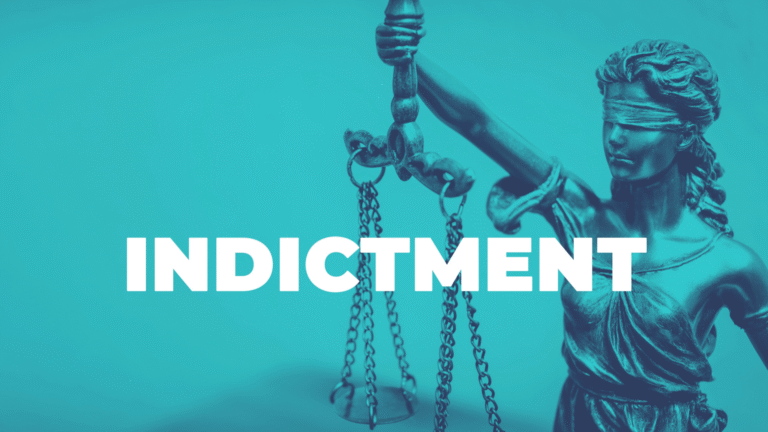Cryptocurrency Boom, Collapse & Regulation: What You Must Know in 2025
From speculative gold rush to structural reckoning — how cryptocurrency moved from hype to hard lessons, and what investors, firms and policymakers are doing now.
Cryptocurrency promised a revolution—money without banks, code without borders, freedom from middlemen. Instead, it delivered one of the most dramatic boom-and-bust cycles in modern finance. From billion-dollar collapses like FTX and Terra to new global regulations reshaping how tokens work, crypto’s story has evolved from wild speculation to cautious rebuilding. This deep dive traces how it happened, who fell, what’s changed in 2025, and what every investor should know before logging in again.
TL;DR
- Cryptocurrency’s rapid rise—from early excitement around Bitcoin, ICOs and meme-coins—spawned massive speculation, FOMO and weak oversight.
- Between 2022 and 2023, major collapses (Terra (UST) / Luna, Celsius Network, FTX) exposed structural risks: algorithmic stablecoins, yield-platforms masquerading as banks, exchanges issuing house tokens.
- In 2024-25, enforcement matured (large fraud verdicts, multi-billion-dollar settlements) while regulatory regimes hardened globally. The U.S. passed the GENIUS Act (July 2025) for stablecoins, the EU’s Markets in Crypto‑Assets Regulation (MiCA) rolled out fully, and global standards advanced.
- Today (2025), crypto is more mainstream (spot Bitcoin/ETH ETFs, regulated custody) but many of the same risks remain: volatile assets, opaque platforms, rubble of failed firms. For investors and firms, the focus is shifting from hype to governance, custody, disclosure and regulatory alignment.
- Key advice: Understand what you’re actually buying or using, check who controls the platform, ensure transparency of reserves or collateral, maintain realistic risk sizing — because the fun isn’t over, but the stakes are higher.
What is cryptocurrency (and why did we care in the first place)?
At its core, a cryptocurrency is a digital asset issued (or transacted) on a blockchain: a distributed ledger maintained by many computers rather than a central bank. Bitcoin pioneered this in 2009, promising a currency outside government control, peer-to-peer payments, no intermediary banks.
But what gave crypto value? Three main drivers:
- Belief — people agreed “this token is worth something.”
- Utility — some tokens promised payments, settlement, smart contracts.
- Speculation — simply buying in hopes someone else pays more.
In the early days (2017-18) much of crypto’s rise was speculative: ICOs raised billions (often for tokens with no product), meme-coins soared, platforms marketed massive yields or “get rich quick.” The technology (blockchain) had promise: faster cross-border payments, improved transparency, potentially lower cost infrastructure. But it was still immature.
In short: crypto seemed like money + computer code. That combination excited people… but it also conflated currency, software, startup equity, and gambling all in one.
The Euphoria Phase: 2017 to 2021
Rapid asset appreciation & retail frenzy
Bitcoin’s value jumped from around US$1,000 in early 2017 to nearly US$20,000 by late 2017. That attracted journalists, celebrities, and general public awareness. Platforms advertised massive returns. Public figures asked about crypto outside restaurants and red-carpets.
ICO mania, meme-coins, pump-and-dumps
Since nearly anyone could issue a token (the code is open source), hundreds of cryptocurrencies proliferated—many with names like “JesusCoin”, “TrumpCoin”, “DeepOnion”, etc. ICOs (initial coin offerings) raised billions in 2017-18. The regulatory guardrails were minimal. Meanwhile, coordinated “pump-and-dump” schemes emerged: social media groups recommended a small token, retail bought in, promoters sold out, price collapsed.
Platform risk and speculative yield
Platforms offering “crypto bank” like services offered high yields. The idea: deposit digital assets, earn double-digit interest. Underlying asset/liability mismatches were often hidden. Many retail investors believed crypto was “the next big thing” and neglected underlying risks.
Early structural signals of risk
Even then, there were warning signs: a major crypto conference in Miami had to stop accepting Bitcoin as payment. Corporate “blockchain rebrands” (adding “blockchain” to a company name to boost stock price) popped in the headlines. The infrastructure remained under-built, custody solutions weak, governance thin.
The Crisis Phase: 2022-2023
Terra/Luna collapse
Terra (UST), an “algorithmic stablecoin”, promised to maintain a US$1 peg by swapping with sister token Luna via algorithmic mint/burn, not by holding real reserves. In May 2022 the peg broke, a death spiral unfolded, and both UST and Luna went to near-zero, wiping out tens of billions in value. Regulators found major deficiencies; Terra’s founder Do Kwon faced extradition and civil/criminal charges.
Celsius Network meltdown
Celsius pitched itself as a crypto-bank, offering high yields and telling users “banks aren’t your friends.” In 2022, it froze withdrawals, went bankrupt. An examiner found funds were used to pay earlier yields and loans were risky. Customers lost access; founder Alex Mashinsky was arrested and later sentenced to prison.
FTX / Alameda affair
Perhaps the most striking collapse: FTX, once the largest crypto exchange with celebrity endorsement (e.g., Steph Curry) and venture capital backing, collapsed in Nov 2022. Investigations revealed the exchange’s hedge-fund arm Alameda used FTX’s token (FTT) as collateral to borrow real assets, withdrew customer funds, and engaged in extremely weak governance. Founder Sam Bankman-Fried was convicted in 2023 and sentenced in 2024.
The fallout
- Huge losses for retail and institutional investors.
- Trust in the “crypto ecosystem” took a major hit.
- Regulatory and enforcement responses amplified: large-scale fraud cases, massive fines, freezes, bankruptcies.
- The core lesson: high yields + lack of transparency + governance failures = systemic risk.
The Regulation & Enforcement Shift (2024-25)
U.S. enforcement & policy
- The DOJ and SEC ramped up enforcement following big crypto failures.
- In 2025, under the President’s policies: The DOJ disbanded its National Cryptocurrency Enforcement Team (April 2025), shifting focus from general regulatory prosecutions toward crime involving crypto (terrorism, human trafficking, cartels) rather than speculative platform enforcement.
- Congress passed the GENIUS Act (July 2025), which for the first time provided comprehensive federal regulation for payment stablecoins — requiring 1:1 backing with liquid assets, audits and disclosures.
- Executive Order 14178 (Jan 2025) directed the administration to explore a “digital asset stockpile” and prohibited a US central bank digital currency (CBDC) without congressional authorization.
Europe & other jurisdictions
- The EU’s MiCA (Markets in Crypto-Assets) regulation completed its rollout: key measures on stablecoins and crypto-asset service providers came into force in 2024, with continuing implementation in 2025.
- Exchanges and issuers in the EU must update token “white-papers” by 23 Dec 2025 to comply with MiCA standards — or risk delisting.
- The EU is now evaluating a centralized regulator model (expanding ESMA) to oversee crypto and traditional finance.
- Globally, 99+ jurisdictions have begun implementing or enacting rules per the Financial Action Task Force (FATF) Travel Rule for VASPs (Virtual Asset Service Providers).
Implications
Regulation has shifted from “crypto wild west” to a more structured environment: stablecoins with backed assets; disclosure and licensing regimes; clearer obligations for exchanges and service providers; new regional licensing hubs. The regulatory pendulum is still settling — especially in the U.S. — but the era of minimal oversight is over.
What’s Different in Late 2025 — For Users, Investors & Firms
More access, but also more scrutiny
- Spot Bitcoin and Ether ETFs (approved in the U.S. 2024) mean mainstream access to crypto-assets via regulated funds.
- Custody has improved, some platforms now operate under recognized regulatory regimes; insurance and audit practices are more established.
- Yet: volatility remains. Crypto remains a speculative asset class.
- Platform risk still material: do you hold your own private keys? Who holds the counterparty risk? What is the platform’s reserve situation?
Governance is front-and-center
- Issuers must comply with MiCA (white-papers, licenses).
- Stablecoins must maintain backing; algorithmic models are under intense scrutiny (academic research now focuses on stablecoin design, stabilisation mechanisms).
- Exchanges, lending platforms, “yield farms”, must show transparency, governance, risk controls — especially after FTX, Celsius.
Regional divergence
- Europe: most firms active in the EU are under MiCA or entering “grandfathering” transitions.
- U.S.: regulatory clarity improving for stablecoins and ETFs, but enforcement has shifted away from general prosecutions and toward specific crime, raising questions about oversight of loophole platforms.
- Elsewhere: Asia, Middle East (Dubai’s VARA), Singapore have their own regulatory paths—global firms must navigate a patchwork.
How to Evaluate Crypto Projects (Your Due-Diligence Checklist)
If you’re considering investing in or using crypto, here are key evaluation items:
- What is the token’s purpose?
- Is it just speculation or is there utility (payments, access, governance)?
- For stablecoins: Are they fully fiat-backed & audited, or algorithmic?
- Platform governance & transparency
- Does the issuer publish audited reserves?
- Does the exchange lend out your assets, issue its own token, or back its hedge fund?
- Who controls the code, upgrades, governance?
- Custody & ownership
- Custody risk matters: If a platform holds your keys, you’re exposed if it fails.
- Do you have direct control? Are there insolvency protections?
- Regulatory/licensing status
- Is the issuer/licenced under MiCA/EU, U.S. state/federal oversight, or unregulated?
- Does the jurisdiction enforce consumer-protections or disclosures?
- Token economics & incentives
- How is the supply managed? Do insiders/early investors hold large stakes?
- Are promotions/hype dominating vs. product/usage?
- Risk sizing & mindset
- Treat crypto as high-risk: only allocate what you can afford to lose.
- Avoid leverage unless you deeply understand the mechanism.
- Keep portfolio diversification; don’t assume all tokens behave like Bitcoin.
Key Terms You Should Know
- Blockchain: Distributed ledger technology where transactions are recorded across many nodes rather than a central server.
- Stablecoin: Token intended to maintain a stable value (often $1); can be fiat-backed or algorithmic.
- Spot ETF: Financial vehicle holding the actual asset (e.g., BTC or ETH) rather than derivatives.
- MiCA (Markets in Crypto-Assets): EU regulation aiming to provide full legal framework for crypto-assets, issuance, service providers, stablecoins.
- GENIUS Act: U.S. law (July 2025) regulating payment stablecoins: backing, transparency, reserves.
- VASP (Virtual Asset Service Provider): Exchange, wallet service, custodian providing crypto-asset services. Must comply with AML/Travel Rule standards.
What to Watch Next
- Stablecoin evolution: Will fiat-backed, high-reserve stablecoins dominate? Will algorithmic ones survive?
- Integration with banking: Are banks going to open major crypto custody/trading lines? How will that affect systemic risk?
- Cross-border cooperation & arbitrage: With EU, U.S., Asia diverging, will global firms restructure or relocate?
- Enforcement focus: With the U.S. DOJ scaling back general crypto prosecutions (April 2025), will oversight gaps emerge?
- Technological innovation: Next-gen crypto protocols (cross-chain, DeFi, tokenised real-world assets) may open new risks and opportunities.
Bottom Line
Crypto’s transformation from fringe experiment to trillion-dollar ecosystem has been dramatic. The days of wild west speculation are giving way to governance, regulation and integration with mainstream finance. But risk hasn’t disappeared—it’s just evolved. If you’re participating in crypto today, go in with your eyes open: question the platform, know the token mechanics, check the reserves, and assume that, yes, you could lose everything. Because in crypto, confidence still is currency—and when that confidence cracks, so can everything built on it.







